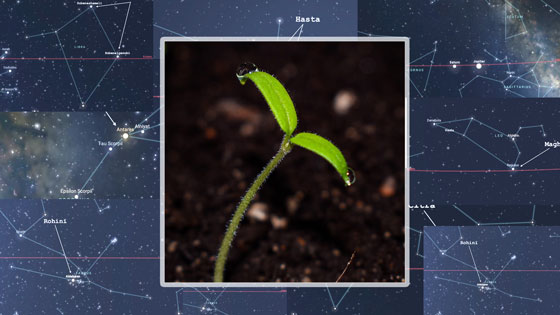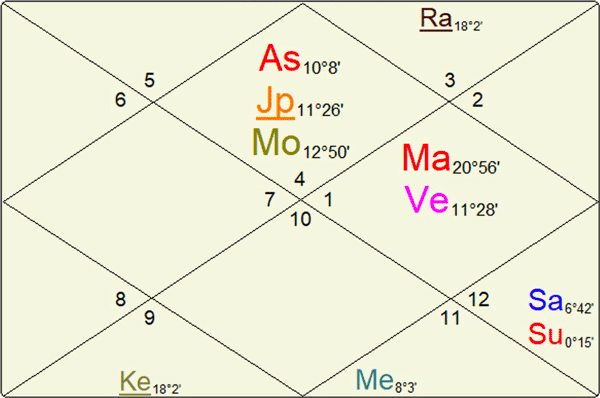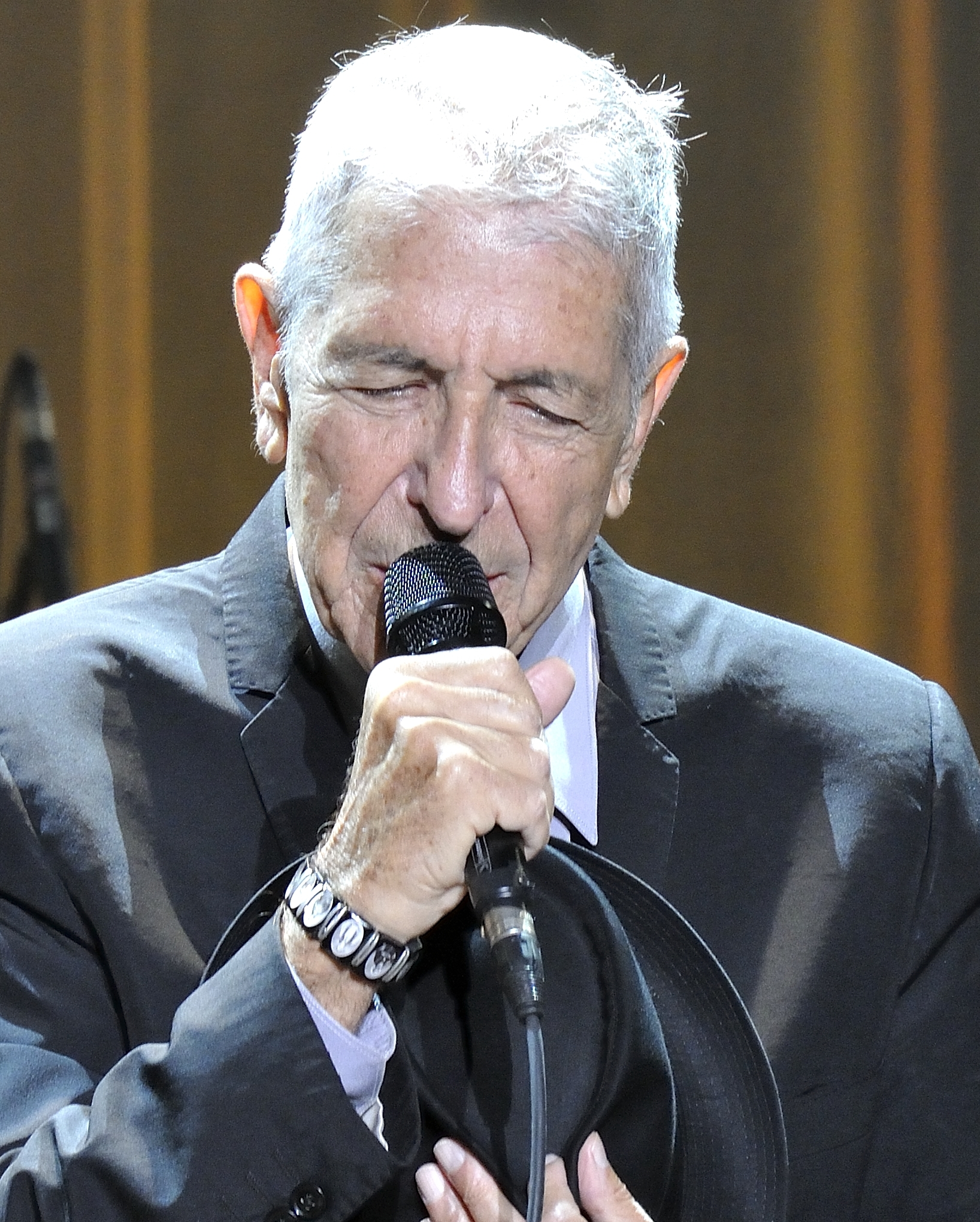Spring | Summer | Fall | Winter | |
2025 | Volume 67 |
| Volume 65 | Volume 66 |
Volume 53, 20 June 2021
“Be like the flower, turn your face to the sun.”

Cosmic Kaleidoscope Journal Volume 2
Diamonds of Destiny - The Nakṣatra Yoga Tārās
I am very pleased to announce
the second volume of Cosmic Kaleidoscope Journal.
The Message of Positive Phototropism
Nature is a wonderful teacher. Day after day I sit at the breakfast table and look through the glass doors at a vine I am trying to train to go over an arched trellis. It made it all the way up one side in record time but getting it to go over the arch and down the other side has been a humbling expeirence. Clearly I am asking that plant to violate its mandate to go up towards the light.
It reminds me of a story from several years ago. My teacher Hart related to us when he came into class one morning that he went out his front door where there was a woven door mat and in the tiny spaces created by the weave, there was enough soil for a little seedling to germinate. That tiny seedling was already bending towards the sun. The moment filled him with renewed wonder that even a tiny little seedling had the intelligence to turn towards the sun to secure its growth and existence.
What does this has to do with Jyotiṣa? Everything! Like a seedling, we are entrained to survive by anchoring ourselves firmly in life. But to thrive, rather than just survive, we seek the light. And we seek it in all forms. How many tourists have sat shivering for hours on the dark rim of the Grand Canyon waiting for sunrise and the miracle of the rays reaching down, down, down and lighting up the whole wall? How many worshippers are on the banks of the Gāṅgā ready to worship the miracle of the rising sun? How many generations have lit the Sabbath candles on Friday night and with graceful motions waved the heat and light towards their faces as they chanted? And how many untold millions look to the stars for answers to our deepest mysteries?
Star Light, Star Bright—First Star I See Tonight
Is it really a star? That beautiful lauded evening star is the graha Venus. Of course it is also the extraordinary morning star but perhaps no one was up early enough to compose a poem about that!
Aptly named Śukra, a dictionary check will reveal a bevy of auspicious meanings ranging from shimmering, white and lucid to spotless, auspicious and virile (literally semen). Following the tradition’s dictum that inference is a primary means of gaining knowledge, much more can be derived from these basic words.

Venus is, of course, one of the two grahas that is always classified as a natural benefic despite any temporal role it might have in a horoscope. Why is this so? Your informed answer might be that it is given that way in śāstra and that, the tradition tells us, is a primary means of gaining knowledge. But why might the ṛṣis have classified Venus in that way? The answer lies in the primary means of gaining knowledge—pratyakṣa (direct observation).
When we examine the six limbs of Jyotiṣ, we find that gola (spherical astronomy) comes first. This is a no-nonsense indicator that observation of the natural sky is a must, not just for ancient skywatchers, but for contemporary followers of astrology as well. Working closely with the next limb gaṇita, (logic and calculation), skywatchers patiently observed Venus year in and year out and found out two outstanding features. The first is its apparent magnitude, a measure of the brightness of an object.
The order of brightness among the grahas is obviously the Sun and then the Moon in its visible phases. After those two luminaries (well-named as such), the brightest object in the night sky by far is Venus. There are times when Venus is not seeable, but for most of its cycle it is not just visible but very bright, outshining all the other stars and at times upstaging the Moon and even the Sun. Might this “look at me” contest be a reason for the enmity between Venus and the luminaries?
The other important feature of Venus is its dance in the sky, its manner of moving. Venus moves in a very smooth and reliable way, punctuated for variety by some charming but not jarring variances. Except for the Sun and one other graha to be named shortly, it is the smoothest gait. One look at architecture in the ancient world will show a preference for a clear but not overdone symmetry—for example, graceful columns with some variety in their decoration yet placed in a symmetrical way around an entrance inviting you into a place of harmony and good vibes.
This winning formula of beauty and symmetry paried with some flasiness and peek-a-boo gives Venus just the right combination for auspicious results for what Venus might touch in a horoscope.
Knowledge Shines Bright
Probably you have deduced by now that the other graha who also shines brightly and is blessed with regularity and symmetry is Jupiter, the giant Guru. Like Venus,its movement varies here and there giving it just enough variety to escape being boring. In addition, astronomers have now concluded that Jupiter might be the protector of the solar system. Recent reports have suggested the its sheer size and gravitational field has produced more hospitable conditions for us by influencing the orbit of the inner planets including earth. It may have also been protective in diverting invading comets or other space objects. Might we dare suggest, knowing that Jupiter is the kārakā for dharma, that adhering to dharma is likewise protective?

Stunning photos of Jupiter revealing its beautiful colors comport with the characteristics given to it by the ancient sages. It is an inspiring, calm and benevolent presence and literally, has largesse and gravitas. Astronomy even informs language! NASA’s Juno spacecraft in February 2019.
Along with its more even gait, Jupiter is second only to Venus among the tārā grahas in brightness except for a relatively brief period of time when it is combust (very close to the Sun).
We are now in a better position to understand the basis for the sages bestowing upon Venus and Jupiter the unvaryinig intrinsic nature of śubha (auspicius) grahas.
Blessed by Benefics
Natural benefics benefics are prominent is this chart, which belongs to the great philanthropist Walter Annenberg.

The Annenberg Foundantion is a family foundation that provides funding and support to non-profit organizations around the world. One of their core initiatives has been the Corporaiton for Public Broadcasting. Another is funding the building of schools, libraries, theaters, hospitals and museums across the US. Annenberg regarded his philanthropic work as an investment in the future of America.
Note the outstanding exalted, retrograde and dig bala Jupiter in the lagna with his sva rāśi lagna lord Moon making numerous auspicious yogas including the rare Gauri yoga (JU with or aspecting a sva or exalted MO in a kendra or trikona). Though Venus is not sva, exalted etc. note how far it is from the Sun. Almost at its maximum distance which means it will be blazingly bright as the evening star. This Venus is also involved in a beautiful Mahārāja yoga with Mars (lords of 4 and 5) and dhana yoga (lords of 5 and 11). The list of yogas is staggering.
Though rain falls in every chart, his was a well-lived life of dignity, prosperity and dharma. Note triple activation of Puṣya nakṣatra—lagna degree, lagna lord, and Jupiter. It all repeats from the Candra lagna.












